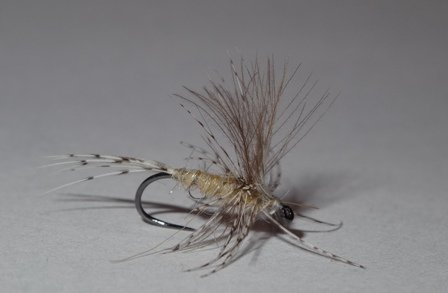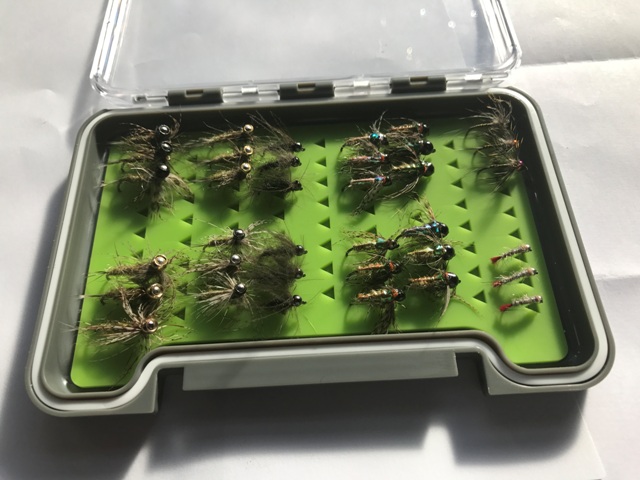Stream fly patterns
There are probably as many river fly patterns as trout in the rivers. Not all of them are effective and many catch more fly fishers than trout. The types of materials available to tiers these days is quite simply incredible. This is one reason for the explosion in patterns. The patterns illustrated here will in the course of the next few months all be live links through to step by step tying instructions. These patterns have caught trout in streams worldwide.There is no such thing as an invincible river fly pattern. Most good patterns will work most of the time. Good tried and tested generic patterns like Sawyers Pheasant Tail Nymph, Hares ear and Adams worked then, work now and will always work. But we can and do improve upon these great traditional fly patterns. Fly patterns evolve with time as our ability at the fly tying vice improves.
In terms of river dry fly patterns the biggest advance in recent years has been the use of CDC (Cul de Canard) to imitate upright flies and sedges/caddis. This water repelling, light folding material is ideal for casting on light leaders. It also has a great profile on the water. That said most of the traditional patterns still work. The parachute Adams remains a great all round fly and is always in my box.
 |
However I'm far more likely to be fishing a soft hackle CDC dry fly on the stream these days. These flies go that step further and have a good profile coupled with that all important illusion of life. Here is a a tying video with some dry fly action using this modern pattern. The use of the word modern is perhaps ironic given that the fly was originally based on a Scottish Borders pattern over a hundred years old. Of course the flies that worked then will still work now. And apart from patterns being tied parachute style as opposed to a traditional hackle patterns over the years haven't changed greatly. |
Soft hackle CDC dry flies have been a recent revelation!
The development of river nymph fly patterns has been far more dynamic because of the development of techniques like Czech and French nymphing. Indeed a whole class of nymph "the Czech nymph" developed directly from these techniques. They are slim and heavily weighted. If you are interested here is one tied by a Czech master, Jan Siman a member of the victorious World beating Czech Republic team that first introduced these techniques and flies with devastating results. The use of coloured tungsten weighted beads is now commonplace as is the increase in use of soft hackles and or other motile materials in modern nymph patterns often used in European nymphing styles.
A selection of modern nymph styles
|
Click on the picture to select your fly selection box. |
Old soft hackle wet flies continue to be effective and versatile as when they were first developed as "spider" patterns here in the North of England hundreds of years ago. In fact many of the modern weighted nymphs use the same soft hackle principle. |
